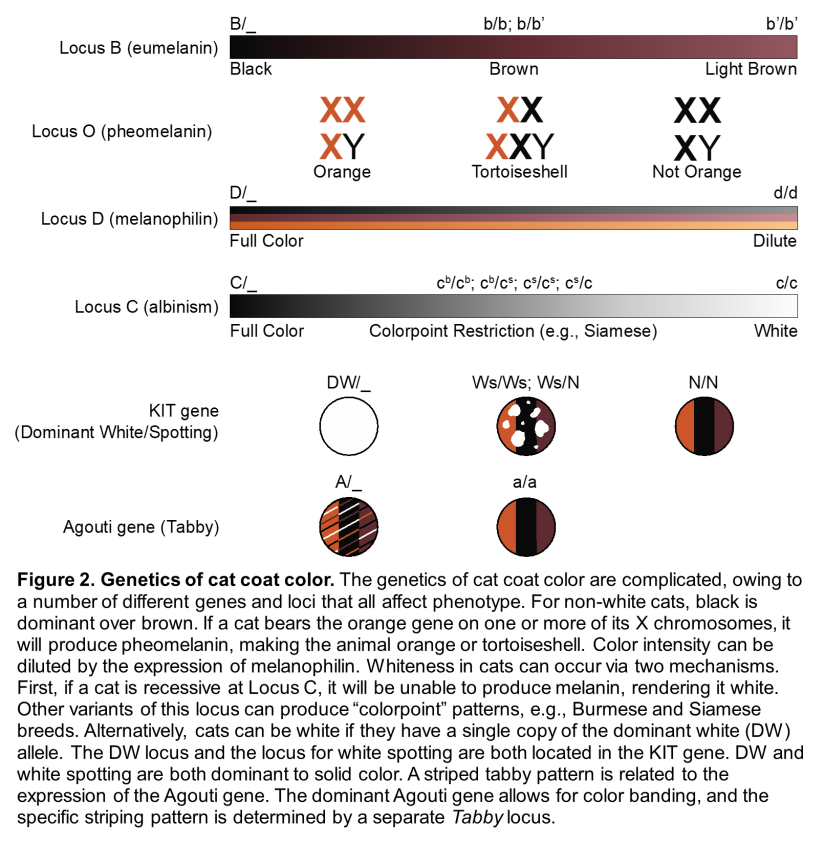Each day when I get home from work, a familiar face greets me from my living room window: my cat, Mr. C. (If you're a David Lynch fan, know that he is named for Agent Dale Cooper's evil doppelganger, Mr. C, from Twin Peaks: The Return; if not, just pretend the C stands for "cat"). I live on a well-trafficked street, my house sitting close to the sidewalk, so pedestrians will occasionally stop to chat with him. Sometimes, late on a Friday or Saturday night, when I am already half-asleep, I hear a voice just outside say, "Hi, kitty!" I'm sure many of my neighbors are familiar with Mr. C: orange and white fur, a clipped left ear, a stumpy tail whose tip was injured and subsequently amputated before I adopted him.
Mild disfigurements aside, my cat is statistically average, at least in relation to Baltimore's cat population. Until recently, census data for the city's feline residents did not exist, but Johns Hopkins Medicine postdoctoral researcher Charlotte Fare is correcting this grievous oversight. Her 2023 report, "A Semi-Quantitative Analysis of the Cats of Baltimore," surveyed a subset of Baltimore cats to study their "appearance and disposition."
Neighborhoods surveyed included the JHM campus, Canton, Downtown Baltimore, Fells Point, Upper Fells Point, and Mt. Vernon. Like Mr. C, nearly all cats observed were perched in windows, and the predominant coat color was orange and orange-and-white, followed by black-and-white and gray-and-white.
Cat breeds, Fare reports, are notoriously challenging to identify due to overlap among coat types. To demonstrate, Fare created the following chart:

Image credit: Charlotte Fare
The takeaway? Baltimoreans aren't snobs–common cat colors in the city indicate that owners tend to adopt mixed breed cats from shelters rather than purchase purebreds from breeders.
This study might, in fact, reveal more about the city's human population than its cats.

Image credit: Charlotte Fare
"People who have pets are generally happier, and so happy pets equal happy people," Fare says. "If you were to see a big change in either the affect or number of window cats, that might signal some sort of sociological change that would be worth paying attention to."
Fare noted that most of the cats she saw indeed seemed happy and friendly. In a behavioral test, she put her finger up to wave and say hello; nearly every cat tried to sniff her finger or pawed at the window.
"Based on appearance and attitude," she wrote, "it can be fairly assumed that all observed window cats were sociable, healthy, and well loved. In the absence of being able to interact with this population, these findings bring the researcher comfort."
It is unclear what these findings mean for my cat, whose behavior was not represented in this survey. Whenever he sees me outside, he often ek-ek-eks at me with the same hostility he displays toward pigeons on the fire escape. I once saw him widen his pupils and shake his butt, as if ready to pounce, at a passing group of toddlers.

Image credit: Charlotte Fare
Perhaps Fare's continued research will shed light on my cat's mercurial behavior (I must stress that when he's not stationed at the window, he acts less vicious; he's curled up against my leg as I write this). Right now, Fare is somewhat preoccupied by her research in Jeff Rothstein's lab, which examines how variations in proteins in the nuclear pore complex might impact disease phenotypes in amyotrophic lateral sclerosis (ALS), a neurodegenerative disease that affects motor neurons. But as long as there are cats in windows, Fare is determined to document them.
"As springtime comes and the sun shines through windows, cats make their way to the window sill so I can see them," she says. "I've seen a couple of kitties recently. I've seen a tabby in the Fells Point area. There's also a bookstore right by Station North that has a cat inside. Her name is Stony."






